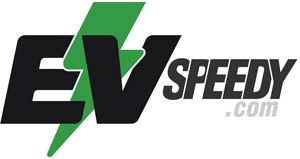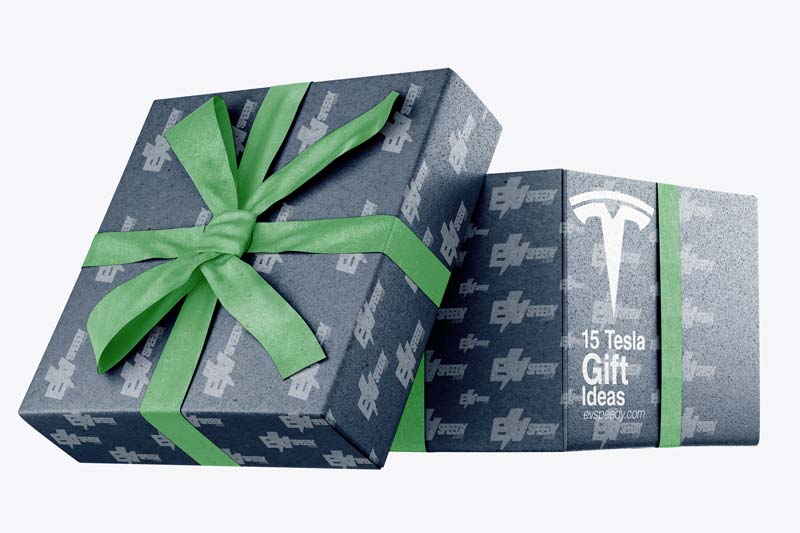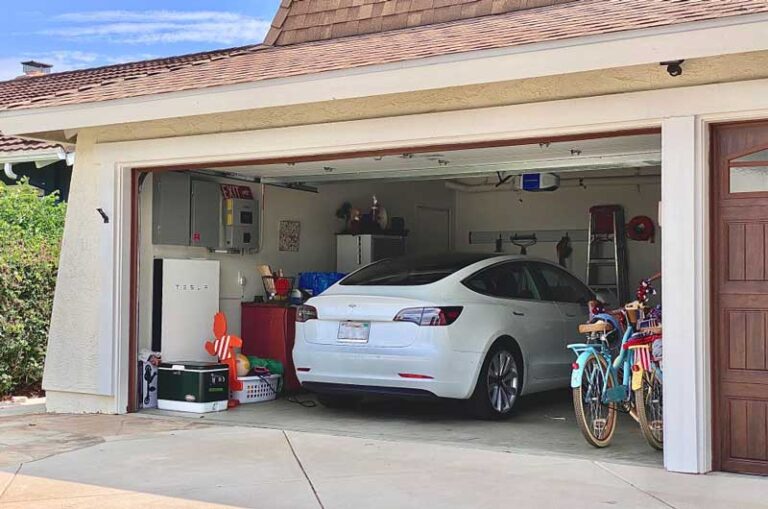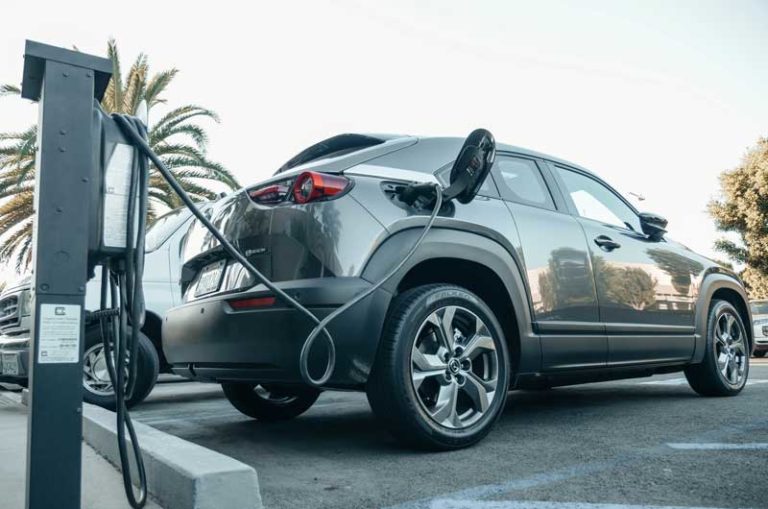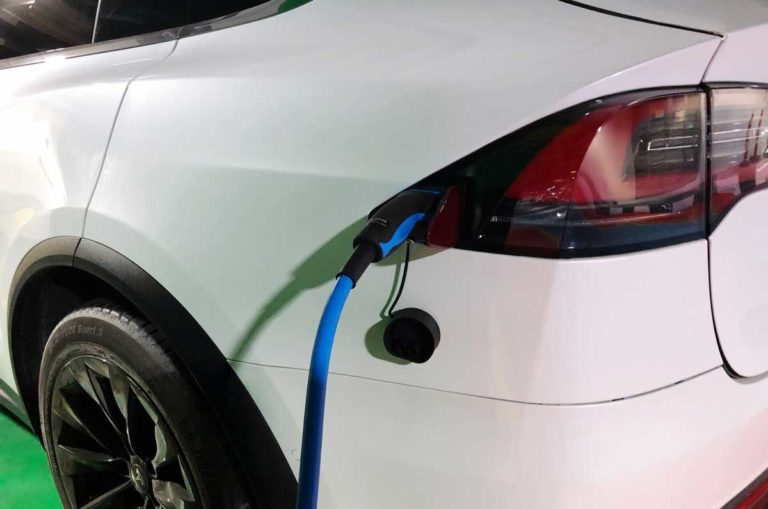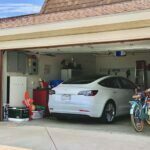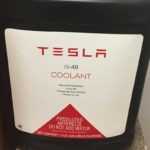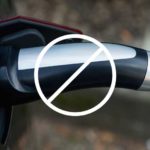I believe that a significant section of car owners would’ve switched to Tesla if they had their fears about charging allayed. Internal combustion engine enthusiasts still need convincing, but at the moment, I see a future dominated by electric vehicles. You can hop on the bandwagon now, given that Tesla has made considerable strides in improving its charging systems.
Tesla wall charging is the most effective charging system for your Tesla. However, there are other alternatives that are convenient yet slower systems you can use to charge your Tesla, including JuiceBox. Its portability is an advantage over the Tesla wall charger.
If you’re wondering whether there are alternatives to Tesla wall charging, read on! This article will answer your questions and offer extra insight into all aspects of Tesla charging.
- Tesla Home Charger vs. Others
- JuiceBox vs. Tesla Charger
- Alternatives to Tesla Wall Connector
- Best Tesla Home Charger
- Best Home Charging Station for Tesla
- Best Level 2 Charger for Tesla
- Most Powerful Tesla Home Charger
- Aftermarket Tesla Wall Charger
- Can Tesla Use Other Chargers?
- Tesla UMC vs. Wall Charger
- Tesla Destination Charger vs. Supercharger
- Tesla Urban Charger vs. Supercharger
- Tesla Wall Charger vs. ChargePoint
- Tesla Wall Charger vs. Nema 14-50
- Tesla Wall Charger vs. Mobile Charger
- Difference Between Tesla Home Charger and Tesla Wall Charger
Tesla Home Charger vs. Others
In the trunk of your newly delivered Tesla, you’ll find a level one charger. The level one charger plugs into any 120-volt socket you have at home and provides the power to an adapter, which connects to your Tesla using a charging cord.
The level one charger comes with all Teslas. However, it’s hard to find anyone using it. The output you can get from it ranges from 2 to 4 miles (3.2 to 6.4 km) of range per hour.
If you only use your Tesla for short errands, the level one charger can work for you. Plug it in for twelve hours overnight, and you’ll have 24 to 60 miles (38.6 to 96.6 km) of range, depending on your Tesla Model.
Let’s face it, 24 to 60 miles (38.6 to 96.6 km) per day won’t be enough for everybody. Tesla offers an alternative for an extra $35.
Give Tesla an extra $35, and the company will deliver a level-two charger, which uses a 240-volt outlet, so you’ll need an electrician to install the outlet with its circuit breaker.
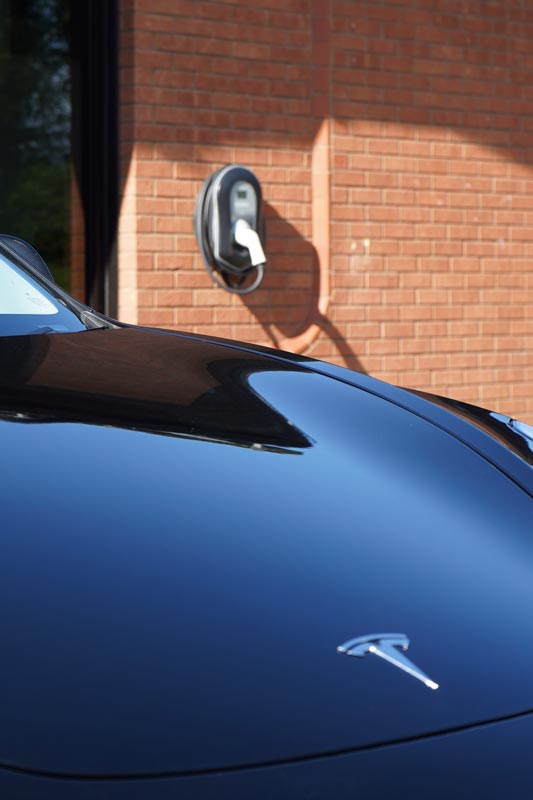
Tesla wall chargers are unrivaled in their effectiveness. However, you might need an alternative charger, such as a JuiceBox, especially if you own other electric vehicles.
The level two charger adds between 20 to 30 miles (32.2 to 48.3 km) of range per hour of charging.
Still not enough? Wait until you learn about the Tesla Wall Connector.
The Tesla wall connector is the fastest and most futuristic Tesla charger you can install at home. It connects to a dedicated 240-circuit and delivers the most miles of range per hour of any home charger (using a 60 amp circuit breaker). It delivers between 30 to 44 miles (48.3 to 70.8 km) of range per hour of charging.
Tesla home charging differs from other chargers in that you can only install a level one and level two charger at home. Level 3 chargers, which use 480V circuits, aren’t available at home.
This YouTube video by Terry White will offer you a better understanding of Tesla home chargers:
JuiceBox vs. Tesla Charger
Tesla recognizes that you won’t always have a Tesla charger in the vicinity when your car needs charging. Therefore, the company sends over a J1772 adaptor for charging using third-party level 2 charging stations.
One such charging station is the JuiceBox charger. It doesn’t differ much from the Tesla charger regarding charging power, but the pair have distinct differences.
Some Tesla users complain that at 18 feet (5.5 m), a Tesla wall charger’s cord is too short. The JuiceBox, on the other hand, comes with a longer 25-foot (7.6 m) charging cord.
I wrote a detailed article about the Juicebox vs Tesla wall charger and what you need to know. Go have a look!
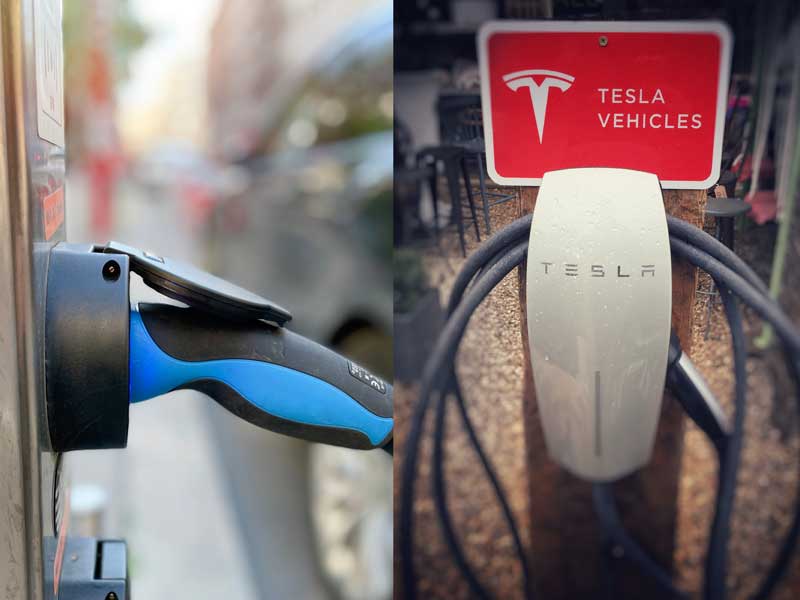
Portability is perhaps JuiceBox’s biggest advantage over the Tesla wall charger.
See, you have to hardwire the Tesla wall charger into your circuit. Meanwhile, the 32 amp and 40 amp variants of the JuiceBox charger plug into a 240-volt socket.
Therefore, you simply unplug the JuiceBox charger if you want to move houses. You’ll need an electrician to unplug your Tesla wall charger before you move, though.
It’s worth noting that the 48 amp and 50 amp versions of the JuiceBox charger need hardwiring. Also, these versions hold no advantage over the Tesla wall charger other than the length of the charging cable.
The JuiceBox is the charger to buy if you own electric vehicles from brands other than Tesla. If you only own — and plan only to own — Teslas, stick with the Tesla wall charger.
Alternatives to Tesla Wall Connector
There are plenty of alternatives to Tesla wall connectors that you can install at home. The JuiceBox that we discussed above is one of them.
The brands that make chargers that rival the Tesla wall connector are:
- ChargePoint
- Grizzl-E
- Siemens
- ClipperCreek
- JuiceBox
The brands vary in terms of cord length, price, and connectivity, but they offer around the same charging power as a Tesla wall connector.
Remember that you’ll need the J1772 adaptor to charge your Tesla using a third-party charger. Tesla provides one for you, so make sure to keep it safe.
Best Tesla Home Charger
The best Tesla Home charger is the Tesla wall connector. It’s the fastest Tesla charger available from Tesla. For the best output, pair the charger with a 60 amp circuit breaker.
The maximum output amps you’ll get from a 60 amp circuit breaker is 48 amps. It’ll produce a maximum of 11.5 kW of alternating current to charge your Tesla.
Anyway, on a similar note, I also wrote a somewhat related article where I discuss How Many Solar Panels are Needed To Charge A Tesla. Check out all the stats and possibilities.
Best Home Charging Station for Tesla
The Tesla wall connector also provides the best home charging station for Tesla.
Its futuristic design looks fantastic on your wall. It’s also easy to use and designed specifically for Tesla.
Some Tesla critics opine that the 18-foot (5.5-meter) charging cord is too short. However, the charging cord works perfectly for any Tesla currently on sale.
Best Level 2 Charger for Tesla
You really can’t go wrong with the Tesla wall connector.
It’s the best level 2 charger for Tesla available on the market. Tesla recommends it as its most convenient and fastest level 2 charger.
The wall connector has added benefits, including Wi-Fi connectivity, enabling it to receive updates from Tesla.
Most Powerful Tesla Home Charger
The Tesla wall charger takes another victory. It can charge a Model 3 at 44 miles (70.8 km) of range per hour of charging.
The slowest it charges is 30 miles (48.3 km) of range per hour of charging (for model X and model 3 Standard Range).
Tesla caps the model 3’s Standard Range charging rate at 30 miles (48.3 km) per hour using alternating current chargers. Level 3 chargers, which use direct current, can charge at much higher rates.
Aftermarket Tesla Wall Charger
We’ve established that you don’t need a Tesla wall charger to charge your Tesla.
There are plenty of aftermarket wall chargers available, each with its set of advantages and disadvantages. The J1772 adapter provided by Tesla facilitates the use of an aftermarket wall charger.
Say you have a Tesla Model 3 and a Chevrolet Bolt EV; which would be the charger to purchase? You’re better off with an aftermarket wall charger. It’ll charge your Tesla and Chevy.
As an added bonus to this article, I’ve created this easy-to-use charging calculator. Simply input your model, charging wattage, and charging percentage, and you will get the estimated time it will take to charge a Tesla in terms of hours. You can play around with numbers a bit just to see how charging time changes:
Can Tesla Use Other Chargers?
Charger compatibility is another issue that plagues the electric vehicle world. Some argue that brands should make their chargers available to all electric vehicles.
Tesla can use other chargers to charge. The J1172 adapter from Tesla allows you to charge your Tesla from non-Tesla chargers.
However, you can’t use a Tesla charger to charge other vehicles because Tesla is the only brand that uses a unique plug design.
Tesla superchargers are perhaps the most effective electric vehicle chargers available. However, the super-fast chargers only connect to Teslas.
Elon Musk stated Tesla would make the superchargers available to other electric vehicle brands in 2021. The cars would require a special adapter — which currently isn’t in production — to use a Tesla supercharger.
Tesla UMC vs. Wall Charger
Tesla UMC (Universal Mobile Connector) is the standard charger that Tesla sends over with your Tesla. It plugs into your 120-volt socket and uses a 15 amp breaker.
The main difference between a Tesla UMC and a wall charger is that the UMC is much slower than the wall charger. For instance, using a 15 amp circuit breaker, the wall charger will charge your Model S at 7 miles (11.3 km) of range per hour. The UMC with a similar breaker adds 3 miles (4.8 km) of range per hour.
Keep in mind that Tesla recommends that you use a 60 amp circuit breaker with the wall charger. A wall charger plugged into a 240-volt output using a 60-volt circuit breaker will add 34 miles (54.7 km) of range per hour to your Model S.
At an extra price, Tesla offers you a slightly more powerful UMC. The NEMA 5-20 plugs into an ordinary 120-volt socket and charges a Model 3 at 4 miles (6.4 km) of range per hour.
The extra cost is only worth one more mile of range per hour.
You are better off installing a wall charger at home and keeping the UMC in your car for emergencies. Tesla offers the same advice.
Tesla Destination Charger vs. Supercharger
Tesla has put up an extensive array of public chargers to provide fast charging for Tesla owners away from their homes.
Owners of businesses such as hotels install destination chargers for their guests. They charge between 30 to 44 miles (48.3 to 70.8 km) of range per hour.
Tesla installs superchargers at various locations, majorly on busy routes. These 480-volt chargers add between 140 to 175 miles (225.3 to 281.6 km) of range within minutes.
Plugging in your destination charger as you have a long dinner or stay overnight at a hotel will add plenty of range to your Tesla. However, it won’t help much if all you need is a 30-minute coffee.
A supercharger, on the other hand, will add significant range in just half an hour.
Tesla Urban Charger vs. Supercharger
You can tell the difference between an urban charger and a supercharger by their locations. You’ll find urban chargers in urban parking lots, while superchargers are generally located in charging stations away from urban areas.
The urban charger maxes out at 72 kW, and the supercharger provides a maximum of 120 kW. However, a supercharger can deliver 60 kW if another Tesla plugs into the same charger. An urban charger provides a constant flow of 72 kW.
Tesla Wall Charger vs. ChargePoint
The ChargePoint is another level 2 charger you should consider when looking for Tesla wall charger alternatives.
The Tesla wall charger and ChargePoint will charge your vehicle at a similar rate. They both connect to 240 volts, but the wall charger needs hardwiring while the ChargePoint connects to a NEMA plug.
The ChargePoint comes with a longer cable and works with all-electric vehicles. The Tesla wall charger comes with a shorter cord and works only with Teslas.
Tesla Wall Charger vs. Nema 14-50
Tesla provides the Nema 14-50 as an alternative to the UMC. The 14-50 plugs into a 240-volt socket that you need to have installed by a technician, along with a 50 amp breaker.
The Nema 14-50 charges are faster than a UMC but slower than a Tesla wall charger. For instance, it’ll charge a model S at 23 miles (37 km) per hour of charging.
A Tesla wall charger will add 29 miles (46.7 km) per hour of charging using a similar 50 amp breaker.
The advantage of a Nema 14-50 is that it’s portable. However, you need a special 14-50 socket to use it.
| Charger | Model S | Model X | Model 3 |
| UMC | 3 mph (4.83 kph) | 2 mph (3.2 kph) | 3 mph (4.83 kph) |
| Nema 14-50 | 23 mph (37 kph) | 20 mph (32.2 kph) | 30 mph (48.3 kph) |
| Wall Charger | 29 mph (46.7 kph) | 25 mph (40 kph) | 37 mph (59.5 kph) |
If you’d like to find out if There’s a Portable Power Unit for Electric Cars, also check out this article that I wrote. I listed 2 options which will come in handy for almost all EV owners.
Tesla Wall Charger vs. Mobile Charger
The mobile charger comes in different varieties, from the slowest UMC charger to the fastest Nema 14-50.
No mobile charger can match the Tesla wall charger in terms of charging speed. The wall charger is also quite a machine to behold.
The mobile charger’s ace in the hole is its portability. You can carry whatever version you have and plug it into a compatible socket.
Difference Between Tesla Home Charger and Tesla Wall Charger
The difference between a Tesla home charger and a Tesla wall charger is that the wall charger is permanently fixed to the wall and charges faster than the home charger.
As a precaution, carry the home charger in your car as you embark on a journey. I recommend that you invest in the Nema 14-50 and use the UMC as a backup.
Check out these 20 great gift ideas for yourself or a Tesla fanboy.
Contact Us if you have any questions or queries.
